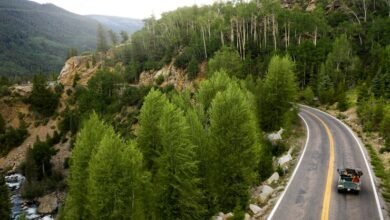Nurturing Giants Secrets to Solving Sequoia Woes

2010 toyota sequoia part no. 2010xb sequoias are magnificent giants that can transform any garden into a majestic landscape. Known for their towering height and robust presence, these trees are a favorite among homeowners, DIY enthusiasts, and gardeners. However, like any living entity, sequoias can face challenges that may hinder their health and growth. In this blog post, we’ll explore common problems faced by sequoia owners and guide you through practical steps to resolve them, ensuring that your sequoia thrives for years to come.
Understanding the Sequoia Phenomenon
Sequoias are more than just trees; they’re natural wonders. Revered for their impressive size and longevity, they symbolize strength and endurance. The appeal of having a sequoia in your garden is undeniable, offering both aesthetic beauty and environmental benefits. Despite their grandeur, sequoias are not immune to issues that can impact their overall wellbeing.
For homeowners and gardeners, maintaining a healthy sequoia involves understanding the potential challenges these trees might face. From root rot to pest infestations, the range of problems can be daunting if not addressed promptly. This guide will provide you with insights into identifying, solving, and preventing these common issues, empowering you to be a proactive sequoia caretaker.
Common Problems with the Sequoia
Sequoias, despite their sturdy appearance, can encounter a variety of problems. Recognizing these issues early on is crucial to maintaining their health and vitality. Below are some of the most frequent challenges faced by sequoia owners.
Root Rot
Root rot is a prevalent problem that can severely affect the health of your sequoia. It typically occurs when the soil retains too much moisture, leading to the decay of roots. This condition can cause wilting, yellowing leaves, and stunted growth. Visual cues such as these are your first indicators of root rot, and addressing them quickly is vital.
To diagnose root rot, inspect the base of the tree for signs of soggy soil or a foul odor. Careful examination of the roots themselves may reveal a mushy texture, confirming the presence of root rot. It’s important to take immediate action upon identification to prevent further damage and ensure recovery 2010 toyota sequoia part no. 2010xb.
Pest Infestations
Pests are another common adversary for sequoias, with beetles and aphids being the usual suspects. These pests can attack various parts of the tree, from leaves to bark, leading to weakened immunity and growth inhibition. Recognizing the signs of an infestation early can help mitigate its impact.
Look for symptoms such as discolored leaves, holes in bark, or clusters of insects. These visual clues can guide you in identifying the specific type of pest affecting your sequoia. Once identified, it’s crucial to implement control measures to minimize damage and restore the tree’s health.
Improper Soil Conditions
Sequoias thrive best in specific soil conditions that support their growth and development. However, improper soil composition can lead to issues such as nutrient deficiency or poor drainage. These conditions can manifest in the form of slow growth, leaf discoloration, or even root diseases.
Examining the soil around your sequoia can reveal much about its suitability. Soil that is too compact or lacks essential nutrients might require amendments to create an optimal growing environment. Understanding these conditions is the first step toward fostering a healthy and vibrant sequoia.
Step-by-Step Solutions
Fixing common sequoia problems requires a combination of knowledge, patience, and the right approach. Here’s how you can tackle each issue effectively.
Resolving Root Rot
To combat root rot, improving soil drainage is essential. Start by ensuring that your sequoia is planted in well-drained soil. If necessary, consider adding sand or organic matter to enhance drainage properties. Additionally, avoid overwatering the tree, allowing the soil to dry slightly between waterings 2010 toyota sequoia part no. 2010xb.
In cases where root rot is advanced, pruning affected roots may be required. Carefully remove any decayed roots and apply a fungicide to prevent further rot. Regularly monitor the tree’s condition to ensure recovery and ongoing health.
Combating Pest Infestations
Managing pests effectively involves both organic and chemical control methods. Begin with organic solutions such as neem oil or insecticidal soap, which can target pests without harming the tree. These treatments are environmentally friendly and safe for your garden.
If pests persist, consider using chemical pesticides as a last resort. When selecting a pesticide, choose one that is labeled safe for use on sequoias and follow application instructions carefully. Regular inspection and treatment can help keep your sequoia pest-free and flourishing.
Optimizing Soil Conditions
Creating the ideal soil environment for your sequoia involves understanding its specific needs. Test the soil pH and nutrient levels to determine what adjustments are necessary. Amending the soil with compost or organic fertilizers can provide the nutrients your sequoia requires.
For soil that is too compact, aeration techniques can improve its structure and promote better root growth. Regularly check the soil’s condition and make necessary adjustments to maintain an optimal environment for your sequoia.
Preventing Future Issues
Preventative care is the key to ensuring your sequoia remains healthy and vibrant. By adopting proactive maintenance practices, you can minimize the risk of encountering common problems.
Routine Maintenance
Implementing a routine maintenance schedule can help catch potential issues before they escalate. Regularly inspect your sequoia for signs of distress and address any concerns immediately. Consistent monitoring and care go a long way in supporting the tree’s longevity.
Early Detection and Quick Action
Early detection is critical to preventing minor issues from becoming major problems. Train yourself to recognize the early warning signs of common sequoia ailments, such as changes in leaf color or texture. Quick action in response to these signs can prevent significant damage and enhance recovery.
Community and Support
Engage with other sequoia enthusiasts and gardeners to share experiences and knowledge. Joining online forums or local gardening groups can provide valuable insights and support. By fostering a sense of community, you can stay informed and motivated in your sequoia care efforts.
Sharing Success Stories
Real-life success stories can inspire and motivate you in your sequoia care journey. Here are some examples of homeowners and gardeners who have successfully tackled sequoia problems.
Overcoming Root Rot
Jane, a dedicated gardener, faced a severe case of root rot with her beloved sequoia. By implementing improved drainage techniques and carefully monitoring watering practices, she was able to nurse her tree back to health. Jane’s sequoia is now thriving, a testament to the power of proper care and attention.
Battling Pesky Pests
Tom, a DIY enthusiast, encountered a pest infestation that threatened the wellbeing of his sequoia. Through persistent application of organic treatments and regular inspections, Tom successfully eliminated the pests. His sequoia has since become a symbol of resilience and triumph over adversity.
Achieving Optimal Soil Conditions
Lisa, a novice gardener, discovered that her sequoia was struggling due to poor soil conditions. By testing and amending the soil with the right nutrients, she created an environment conducive to growth. Lisa’s sequoia now stands tall, a testament to her commitment to learning and improvement.
Conclusion
Caring for a sequoia is both a rewarding and challenging endeavor, but with the right knowledge and approach, you can overcome any obstacle. Identifying and addressing common problems is crucial to ensuring your sequoia remains healthy and flourishing for years to come. By following the guidance outlined in this post, you’ll be well-equipped to tackle any sequoia-related challenge.
Remember, you’re not alone in this journey; there are countless homeowners, DIY enthusiasts, and gardeners who share your passion and challenges. Engage with your community, share your experiences, and continue to learn and grow. For more gardening tips and home maintenance advice, consider subscribing to our newsletter. Together, we can achieve thriving gardens and healthy sequoias.



